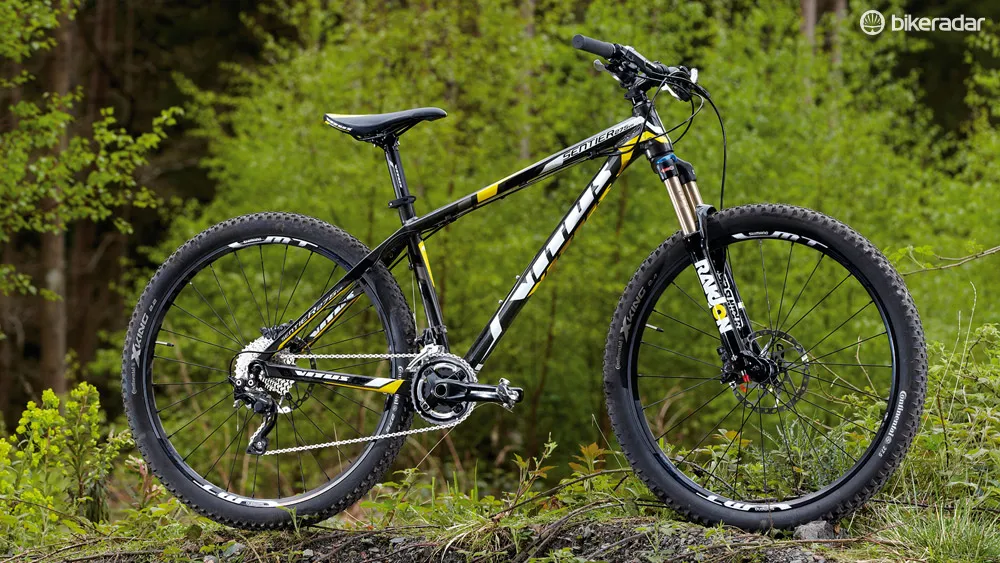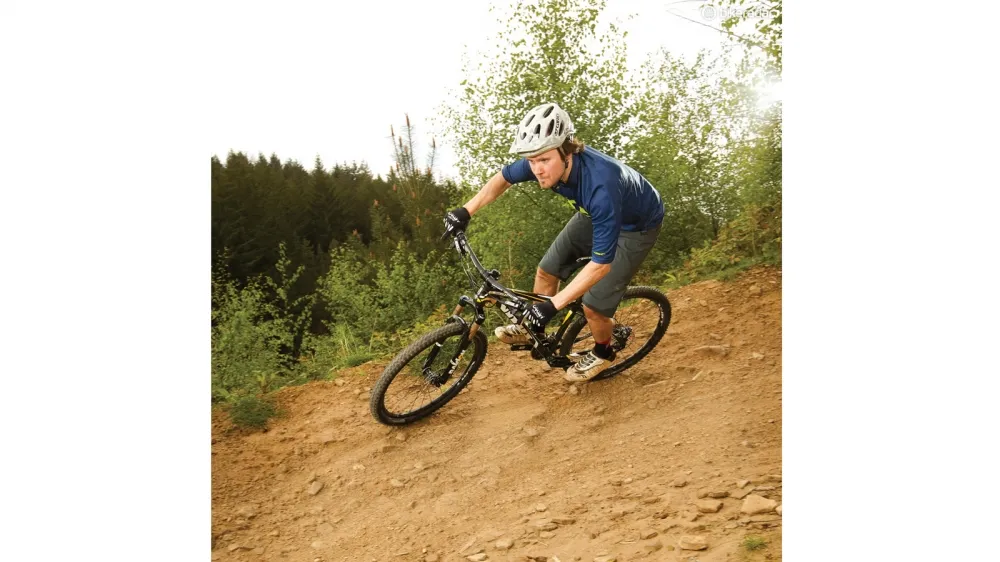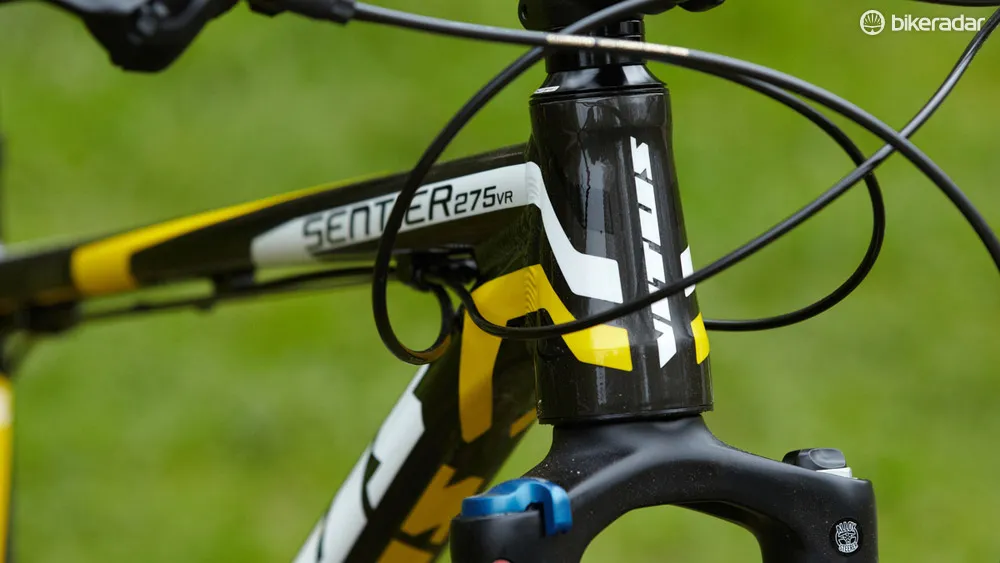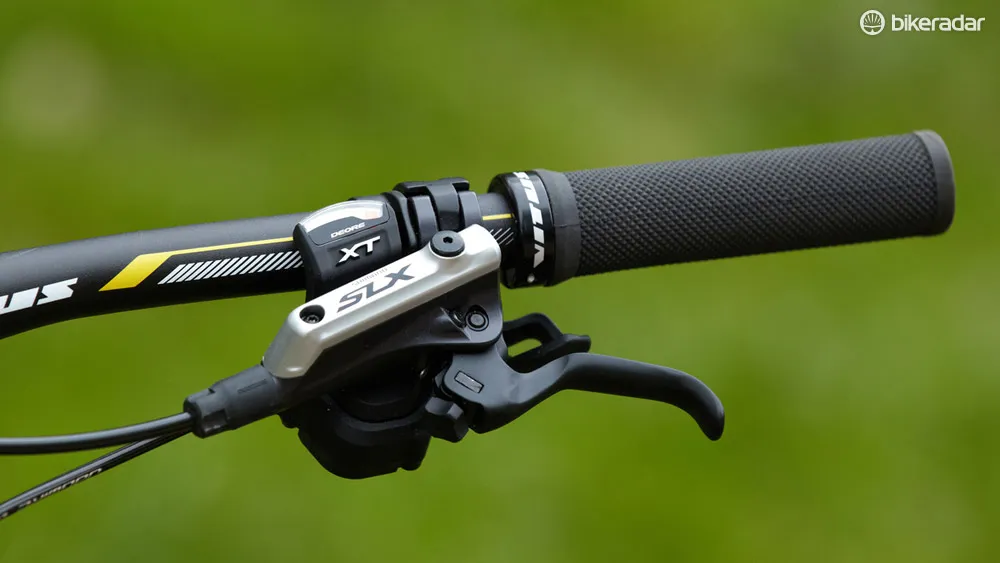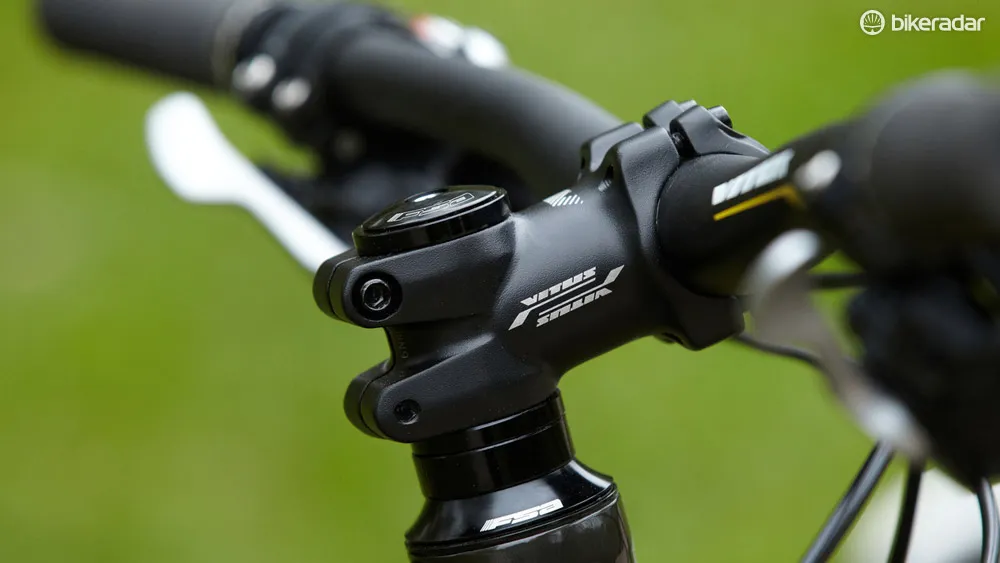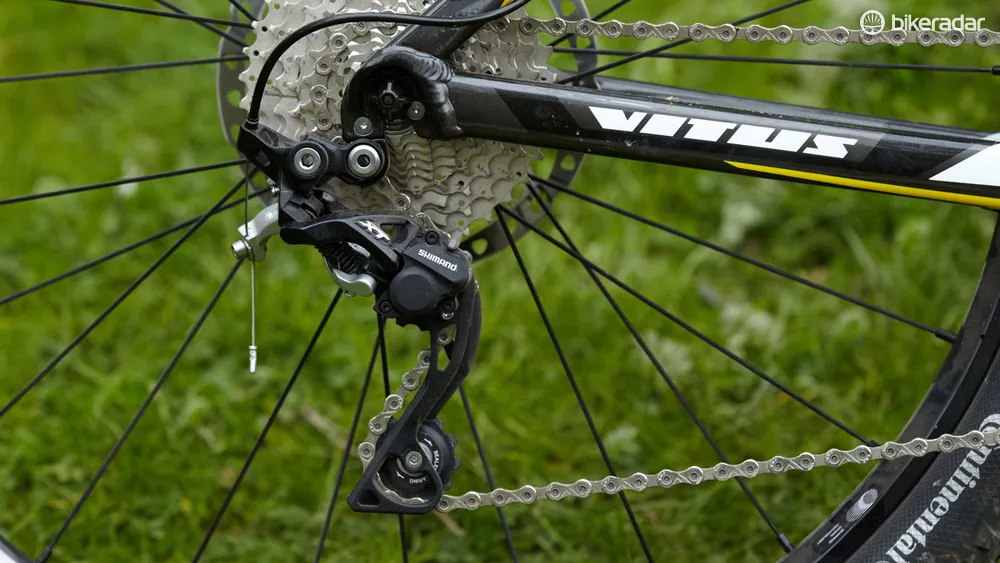Vitus says its Sentier range is designed for “backwoods singletrack and trail centre assaults”. That’s pretty much the kind of riding most keen mountain bikers do, most of the time, so the Sentier should suit plenty of people – in theory.
Blending must-have 650b wheels with slack angles, a light frame and a 2x10 transmission sounds good on paper. The question is, how does it ride?
Frame and equipment: a well-balanced selection
Mechanically formed triple-butted aluminium tubes make up the bulk of the Sentier frame. Mechanical forming is a cheaper way of profiling tubes than the better known hydroforming process, while the variable wall thicknesses should reduce weight without sacrificing strength where it’s needed. An all-up weight just nudging over the 12kg mark is pretty respectable for a hardtail in this price bracket, so we reckon Vitus has got the balance about right.
Despite its “aggressive” label – Vitus’s own description – the Sentier’s top and down tubes aren’t overtly oversized or complex in profile. The tapered head tube and 32mm fork stanchions help keep the front end pointing where it’s supposed to, though it’s a shame there wasn’t room in the budget to upgrade the 9mm quick-release front axle to something more substantial.

The Sentier has a tapered head tube – most of its tubes are mechanically formed and triple-butted
The rear end is pretty beefy, with chunky square-section seatstays and deep oval-section chainstays, and there’s provision for a chain guide if you fancy running a single chainring up front. There are no rack or mudguard mounts though, so if you’re after a workhorse load-carrying commuter you’ll have to look elsewhere.
Fork performance can make or break a hardtail, so it’s good to see an air sprung Suntour Raidon holding up the front of the Vitus. It may not have the kudos of, say, a RockShox, but its performance out on the trail is more than a match for the bigger brand’s budget offerings. Watch out for the protruding rebound dial though – it’s vulnerable to getting knocked when the front wheel is removed.
Vitus hasn’t skimped on speccing the Sentier VR, and it shows. Only the finishing kit – which is all from its well-designed own-brand stable – doesn’t have the draw of a big name. Continental rubber provides grip, FSA offers its neat 2x Comet crankset, and the remainder – from wheels to brakes and gears – is from Shimano.
There’s nothing here that we’d want to change and we’re particularly pleased to see 180mm brake rotors at both ends. For a bike that has high-speed, gravity-assisted aspirations, that bodes well for braking performance on long, fast descents.

Big brake rotors at both ends dissipate heat better, meaning more powerful and consistent braking on long, steep descents
Ride and handling: gravity-assisted thrills – if you show it who's boss
The Vitus’s long top tube and short stem send out a strong message – this is a bike that wants to play. By the time you’ve thrown in 120mm (4.7in) of fork travel and a head angle so laidback it’s practically comatose, you’ve little choice but to give in to the siren call of airtime.
The Sentier VR doesn’t roll down the trail – it hops, skips and jumps its way down. The stubby stem and slack head angle put your weight further behind the front axle than on a conventional, cross-country orientated design. That translates into a light, placeable front end that’s just dying to be shown who’s boss. Thankfully, two component choices play a big role in making sure all this aerial lunacy doesn’t end in tears.
First, the fork’s a good ‘un. While – as mentioned above – it may lack the big-name kudos of the forks plugged into the front of some of the competition, the Suntour Raidon is quiet, smooth and progressive on everything from small hits to big wheel-devouring lumps of rock. Second, the SLX brakes – with big rotors at each end – have serious bite. You can pilot the Vitus into corners at frankly unwise speeds and never run out of braking grunt.

The Sentier is fitted with SLX brakes
Is there a downside? Well yes, actually. Those square-section stays, combined with wheels that don’t roll quite as easily as 29in hoops, make for a fidgety rear end. Technical climbs need deft line choices and some coaxing from rider weight shifts to keep the rear end planted and driving forward, while high-speed descents can have the rear end skitting about all over the place. A bigger tyre might help, but this is definitely a bike that needs to be shown a firm hand. If you can live with its high-maintenance character though, the Vitus is a trail-taming blast.
